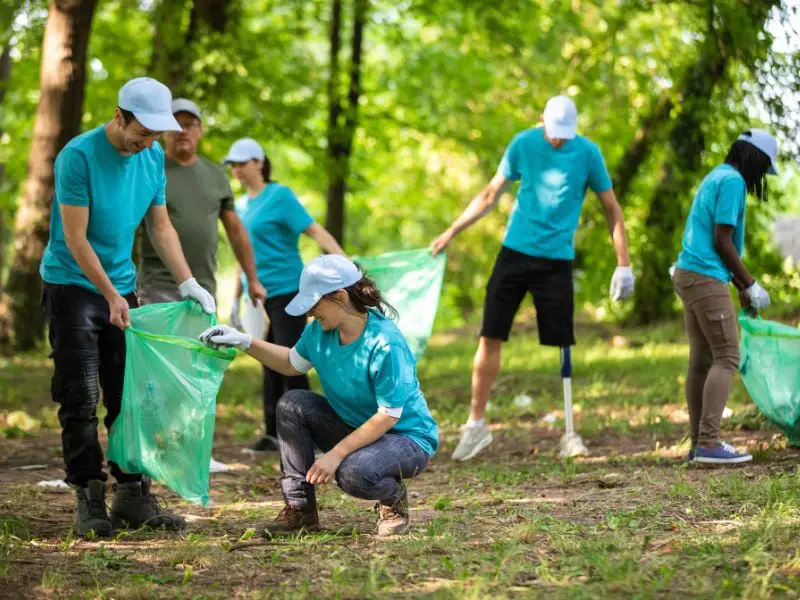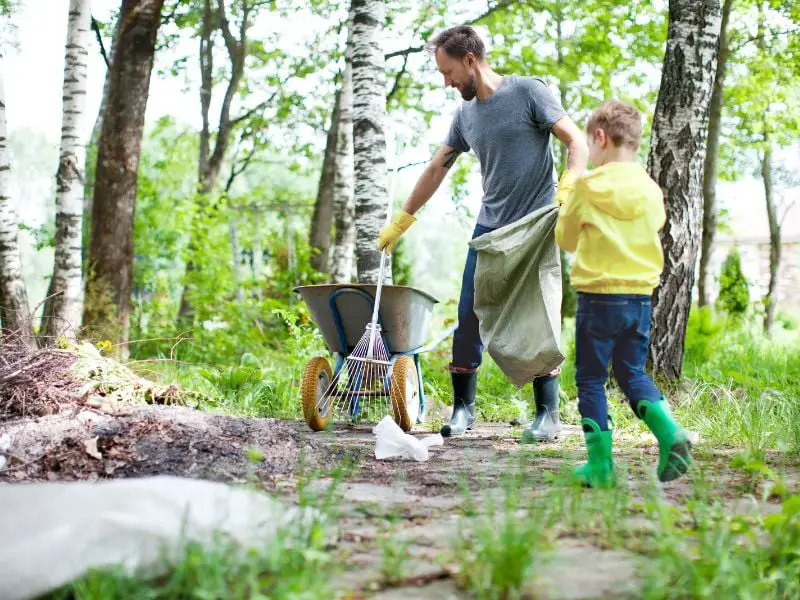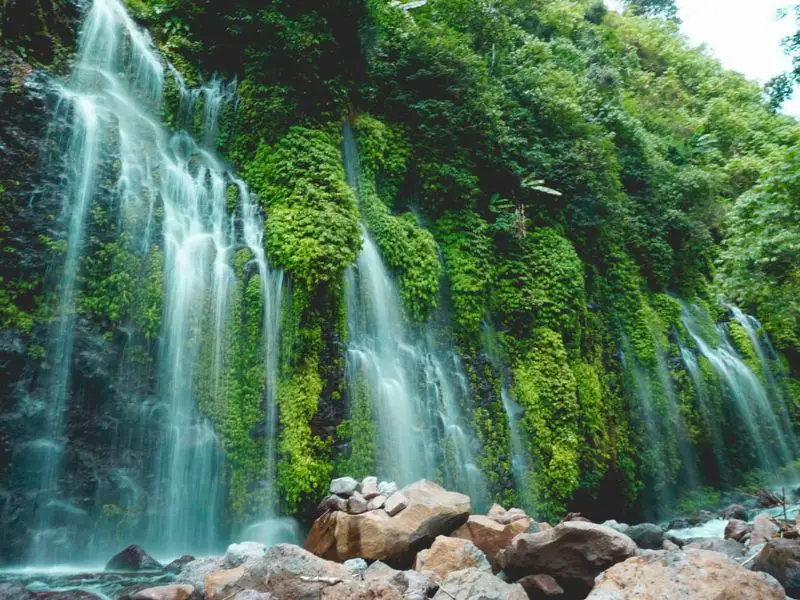Climate change is one of the most important and urgent environmental problems confronting the globe today. It already has major and expensive consequences on our communities, health, and environment.
Climate change covers rising average temperatures and extreme climate events, shifting species populations and habitats, rising sea levels, and various other consequences.
This post will discuss the largest worldwide nonprofit environmental organizations, their mission, and significant operations. However, they are not included in any particular order, and we recognize that hundreds of other organizations are working to improve the environment.

Environmental Organizations: Catalysts for Change
Environmental organizations have long been the guardians of our planet, sounding the alarms on critical issues and pioneering solutions for a sustainable future. Their efforts are the backbone of many green initiatives, driving change from grassroots levels to international platforms.
Advocacy and Awareness
One of the primary roles of environmental organizations is spreading awareness. Through campaigns, seminars, and publications, they enlighten the masses about the nuances of topics like water conservation, waste reduction, and carbon emissions. Without their relentless effort, many of us might remain unaware of the tangible steps we can take to make a difference.
Research and Innovation
These organizations are hubs of innovation. They fund and conduct research to find sustainable alternatives to existing materials, energy sources, and consumption patterns. This research often leads to breakthroughs that pave the way for greener technologies and methodologies.
Policy Influence and Implementation
Their voices echo in the corridors of power. Environmental organizations play a crucial role in shaping policies, ensuring that governments and corporations prioritize sustainability. They work diligently to ensure that rules are not just made but are implemented and adhered to.
Grassroots Movements and Community Engagement
At a local level, these organizations often engage communities, teaching them sustainable farming techniques, waste management practices, and water conservation methods. By empowering communities, they ensure that sustainable practices are integrated into daily lives.
Partnerships for a Broader Impact
Many environmental organizations partner with businesses, ensuring that industries adopt eco-friendly practices. From sustainable sourcing of materials to reducing carbon footprints, these collaborations lead to impactful changes in the corporate world.
In essence, while individual efforts towards a greener planet are commendable, the collective and structured endeavors of environmental organizations amplify the impact. Their tireless efforts, knowledge, and dedication act as the guiding light, leading us towards a sustainable future.
Environmental Organizations at the Forefront of Change
1. Environmental Defense Fund
The Environmental Defense Fund (EDF) is a nonprofit organization based in the United States that protects the natural environment and promotes clean energy solutions. EDF was founded in 1967 by a group of scientists, lawyers, and businessmen concerned about the growing harm done to the environment by human activities and the threat of losing natural systems. Since then, the organization has expanded to become one of the largest international environmental organizations in the world. EDF works to fight climate change, protect wildlife, ensure access to public health, save the oceans, and safeguard the natural beauty of our planet.
The Environmental Defense Fund’s programs focus on restoring and protecting natural resources and combating climate change. The organization funds groundbreaking scientific research, publishes pragmatic analysis, brings legal challenges against polluters, and works with governments worldwide to improve policies and practices that protect the environment.

2. The Nature Conservancy
The Nature Conservancy was founded in 1951 and is headquartered in Arlington, Virginia. The organization’s mission is “to conserve the lands and waters on which all life depends.” It has since expanded to more than 500 projects in 72 countries. The Nature Conservancy works with local groups to protect natural areas and wildlife. It also works to improve regional farming practices for both economic and environmental reasons.
3. Environmental Working Group
The Environmental Working Group (EWG) is a nonprofit environmental organization in the United States. EWG was established in 1993 by Ken Cook EWG provides funding and support to other organizations that advocate against environmental threats.
The group has lobbied against the use of cancer-causing pesticides in agriculture, as well as the use of lead in toys. The EWG also conducts research into the environmental impacts of consumer products. The group does not oppose the use of fossil fuels entirely but states that such powers should be changed with more environmentally friendly alternatives.
4. Greenpeace Fund
Greenpeace is a worldwide environmental organization that works to protect the world’s natural resources and habitats from pollution and destruction. One of their most essential campaigns is their fight against global warming and their goal of getting vehicles off fossil fuels and renewable ones.
Greenpeace has not abandoned its fervent idealism; the organization has preserved its corporate integrity and continues to motivate many people to take urgent and optimistic direct action. In the past, governments have been swayed by the brave efforts of small groups of concerned citizens, such as Greenpeace’s pioneering attempts to stop nuclear testing in Amchitka, Alaska.
5. Friends of the Earth
Friends of the Earth manifests itself as a “bold and fearless voice for justice and the environment.”
Recent movements have targeted bee-killing neonicotinoid insecticides, “dirty” tar sands oil extraction, and palm oil production’s environmental damage. Those who are against the general use of fossil fuels, GMOs, and the patenting of human genes will appreciate FOE’s unambiguous stance and activism.
6. Rainforest Alliance
The Rainforest Alliance is a nonprofit group that strives to protect the world’s rainforests. This organization was founded in 1989 by a group of ecologists and concerned citizens who saw the need for safeguarding rainforests worldwide.
The Rainforest Alliance is a nonprofit organization focusing on rainforests worldwide. It works with many different businesses, governments, and individuals working to protect the world’s rainforests through its global efforts. Their website provides information for consumers and travelers, assisting us in conserving some of the most biodiverse, vulnerable, and worldwide critical environments.

7. Earthjustice
Earthjustice’s mission statement is simple: “Because the world needs a good lawyer.” Earthjustice began as a Sierra Club lawsuit to protect a remote California valley from development as a Disney ski resort but has now evolved into an independent campaign focused on high-impact, precedent-setting challenges.
These are committed, skilled lawyers fighting David-and-Goliath battles that many of us feel powerless to fight. Donating here is one way to balance the “big cash” of giant corporate interests against our fragile ecology’s often heartbrokenly underfunded voice.
8. Laudato Si’ Movement (Formerly, Global Catholic Climate Movement)
With the assistance of 1.3 billion Catholics and other good people, the LAUDATO SI’ MOVEMENT strives to combat the injustice of climate catastrophe and ecological disaster. Pope Francis’s request initiated this movement.
They already have more than 8,000 qualified animators, more than 800 member organizations, and several chapters to assist in making their vision a reality. In addition, their endeavor has reached six continents.
9. WWF
WWF is the largest conservation organization globally. It has more than five million international fans and is active in over 100 countries. They sponsor over 1,300 environmental and conservation initiatives.
The WWF is a global non-governmental organization. It was established in 1961. They also preserve wildness and mitigate human impact on the environment.
10. Earth Island Institute
The Earth Island Institute, or EII for short, is a California-based environmental nonprofit organization founded in 1982 by renowned environmentalist David Brower. The organization is dedicated to protecting the natural environment through research, advocacy, and direct action programs. EII’s work aims to help preserve habitats, watersheds, wildlife, and natural resources that threaten growth and development.
Their headquarters are in Berkeley, California. It promotes ecological action by providing administrative and organizational infrastructure for particular projects through cash sponsorship. They have a network of over seventy-five activist initiatives in the United States and abroad.
Exploring the Green Horizons of North America with Environmental Organizations
North America, with its sprawling landscapes, is a tapestry of biodiversity. Its vast stretches, from the pristine beaches of Santa Barbara in Southern California to the misty peaks of National Parks, are teeming with life. Yet, the continent faces several challenges in the realm of environmental protection and sustainability. This article aims to shed light on some of the key players, initiatives, and concepts shaping the future of North America’s environment through the lens of environmental organizations.
The Urban Environmental Vanguard: San Francisco, Santa Barbara, and Environmental Organizations
San Francisco and Santa Barbara are not just tourist destinations; they are hubs for environmental education and activism. Institutions and environmental organizations born in these cities have been pivotal in driving environmental justice and public interest in sustainable practices. The Surfrider Foundation, for instance, originated in California and has been instrumental in coastal conservation and public awareness campaigns alongside other environmental organizations.
Guardians of the Wild: Conservation Environmental Organizations
The National Wildlife Federation, the National Audubon Society, and the Wildlife Conservation Society are just a few of the many environmental organizations that have put North America on the global conservation map. Their efforts range from protecting endangered species to conserving public lands. The African Wildlife Foundation, although primarily focused on Africa, also collaborates with these environmental organizations to share knowledge and best practices.
Similarly, the National Geographic Society, an iconic environmental organization, through its powerful visuals and documentaries, has brought the wonders of North America and the challenges it faces to global audiences. On the other hand, environmental organizations like the Rainforest Action Network and the Climate Reality Project tackle issues of deforestation and climate justice, respectively.
The Science, Health Perspective, and Environmental Organizations
Environmental science is the backbone of many of these initiatives. Research and data guide actions, from conserving natural resources to understanding the effects of pollution on environmental health. Environmental organizations like the Natural Resources Defense Council and Concerned Scientists play a crucial role in bridging the gap between scientific knowledge and actionable policy.
Environmental professionals, especially those associated with environmental organizations like the Environmental Protection Agency, ensure that regulations are in place to safeguard the environment and public health.
The Spirit of Conservation through Environmental Organizations
The concept of land trust is gaining momentum in North America, especially in regions like Southern California. By ensuring that lands are set aside for nature conservation, these trusts play a pivotal role in protecting biodiversity. Environmental organizations like the Wilderness Society, Ocean Conservancy, and the Conservation Fund emphasize the importance of preserving both terrestrial and marine ecosystems.
Moreover, environmental organizations like the World Wildlife Fund and the National Association for environmental education highlight the importance of integrating environmental awareness into mainstream education. Events like Earth Day, backed by numerous environmental organizations, serve as reminders of our collective responsibility towards our planet.
Making Simple Changes for a Sustainable Tomorrow with the Help of Environmental Organizations
In the journey towards an eco-friendlier world, it’s vital to remember that even the smallest steps can leave lasting impacts. Many environmental organizations emphasize that simple changes in our daily routines can make a significant difference. Here are some ideas and insights based on global observations that can reshape our lifestyle for a sustainable future.
1. Conserve Water, Save Money
The importance of water in our daily lives is undeniable. Environmental organizations worldwide have highlighted that insulating your hot water tank can lead to significant energy savings, reducing both costs and your carbon footprint. Moreover, consider shorter showers. With an average bathtub guzzling up to 70 gallons, a 5-minute shower consumes only 10-25 gallons. Opting for low-flow showerheads and DIY shutoff valves can further minimize water usage.
2. Waste Not, Want Not
Waste management starts at home. Striving for a low waste lifestyle doesn’t just mean consuming less; it means consuming smartly. For instance, replacing plastic take-away containers with reusable ones can massively cut down the plastic waste that dominates our oceans. Also, incorporating zero waste tips into our daily routine, such as using washcloths instead of paper towels or filling up an insulated coffee mug at home instead of disposable cups, can be both economical and eco-friendly.
3. Materials Matter
The materials we choose daily make a significant difference to the environment. Did you know most makeup remover wipes contain harmful microplastics detrimental to marine life? Opt for products made from natural materials like wood or bamboo. Not only are these sustainable, but they also tend to last longer, proving the adage true: quality over quantity.
4. The Eco-Friendly Lifestyle
Sustainable living doesn’t need a complete lifestyle overhaul; sometimes, it’s the small shifts that count. Replace cling wrap with beeswax wraps, add more plant-based foods to your plate, and practice reusing items around your home. Sustainability is a mindset, and every small action contributes to a broader goal.
5. Travel with a Purpose
While travel enriches our lives, it’s essential to choose sustainable travel tours that support both the environment and the local economy. Consider eco-tourism companies that prioritize conservation and sustainable practices, ensuring your adventures leave a positive impact.
6. Minimizing Chemical Harm
Our surroundings are increasingly getting laden with chemical contaminants. Simple steps, such as opting for houseplants that not only consume CO2 but also purify the air, can make a home healthier. Moreover, being conscious of the products we use, like shifting from oil paints that leak harmful chemicals, can significantly benefit our waterways.
7. Watch That Carbon
From using a clothesline to drying clothes (reducing carbon emissions) to investing in carbon emission offsets for trips, these methods provide dual benefits. They cater to our needs while also helping the environment.
8. Food for Thought
Food waste is an alarming issue. By cooking our own meals, we control the ingredients, their sourcing, and reduce the food waste produced. A simple act of home-cooked meals cuts down on packaging, plastic waste, and ensures we use what we buy.
9. Ideas for Greener Celebrations
Holidays and celebrations can be eco-friendly too! Websites like Green Pages Online offer fabulous gift ideas, and choosing to have a fair trade wedding can make your special day even more memorable. It’s about celebrating responsibly, with less waste and more mindfulness.
Frequently Asked Questions (FAQs)
Final Thoughts
There are many environmental organizations worldwide that are working towards a better environment. Some common goals include creating awareness, raising funds for green projects, and educating and raising ecological awareness. If you want to contribute to their efforts, here are a few suggestions.
– Donate: Many environmental charities are always in need of donations. Donating money is a great way to bolster their cause. You can contribute to specific projects or charities or their general funds.
– Volunteer: Another way to support these organizations is to volunteer. Many organizations need help from volunteers, either running events or helping with projects.
– Get Involved: Stay informed about current environmental issues, solutions, and best practices. Understanding the challenges and possible solutions is essential to making a meaningful impact.
Environmental organizations usually form teams and work together to make a difference in the environment. Our planet is our home. But right now, our home is under threat from climate change, pollution, and unsustainable growth. We can no longer ignore these issues; we must act now. Everyone can make a difference.
You May Also Like: 8 Easiest Vegetables to Grow, Best Ways to Save Electricity, Alternative Energy Sources


interesting news
Pretty! This has been a really wonderful post. Many thanks for providing these details.